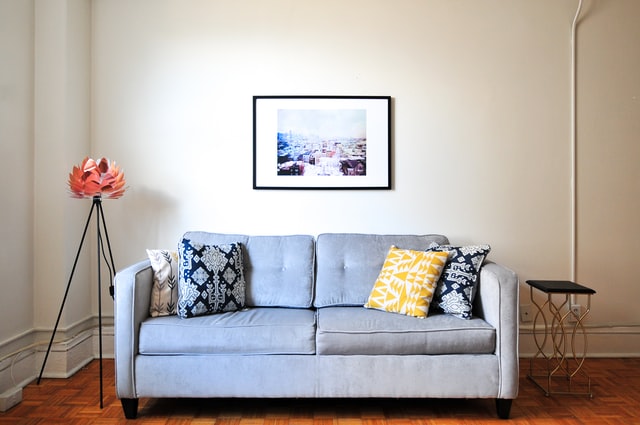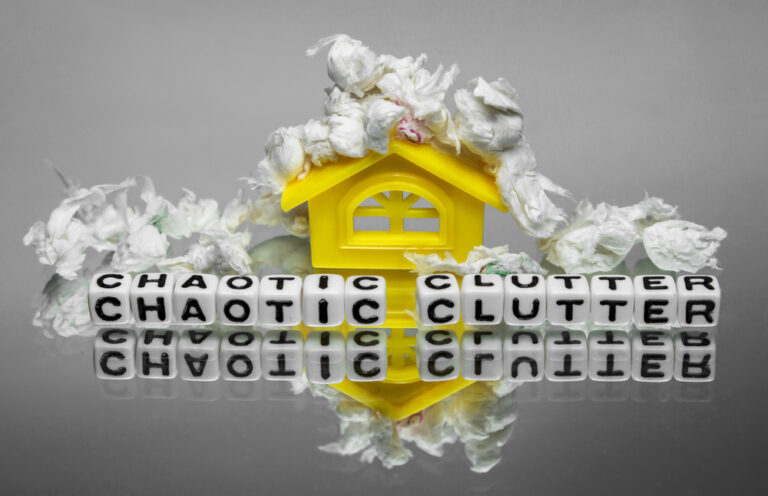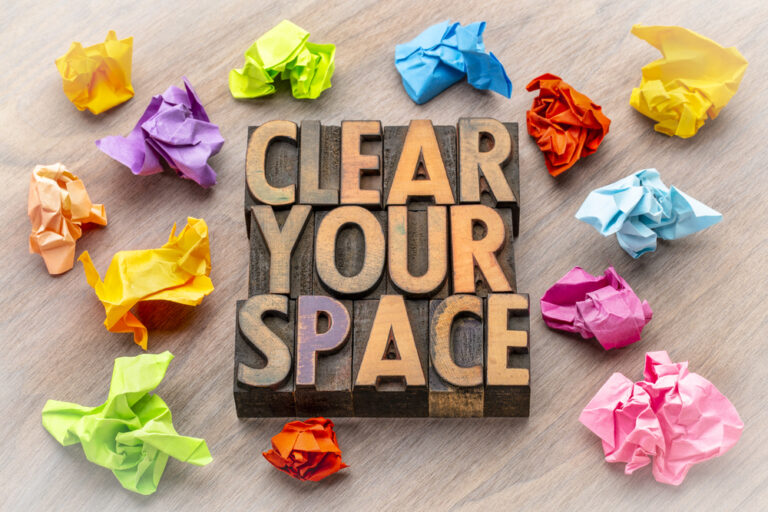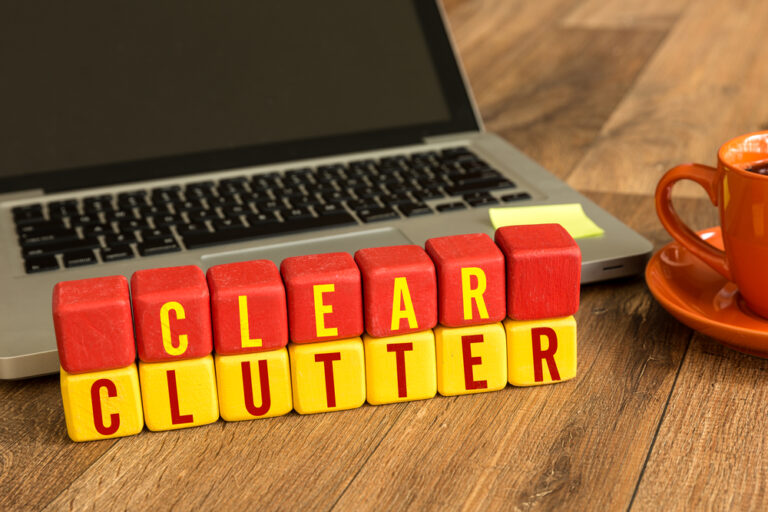After Decluttering: Simple Actions to take if your home is still cluttered
Are you loving your newly decluttered home? Or are you disappointed, that despite all that hard work, the results aren’t what you expected?
Don’t be discouraged if your home still feels cluttered. Remember: the journey to a simplified life is just as important as the end goal.
And sometimes, all you need are some simple fixes to help you get to the desired results you were aiming for.
Before rolling up your sleeves and dive into another round of decluttering, let’s explore some tips that will help you further declutter your home.
First, Understand your “clutter tolerance”
It is important to recognize that your dissatisfaction might come from a change in clutter tolerance.
Remember what your mind went through during the decluttering process?
While decluttering, you directed all your focus and energy towards finding items to get rid of. You constantly evaluated items in your home and made decisions about what to keep, trash and donate.
In fact, ‘what else can I declutter?’ was probably a question that frequently popped up in your mind.
Having been in ‘declutter mode’ for a while, you’ve become more attuned to everything in your surroundings. You might have noticed that what were once considered normal household necessities now appear as clutter to you.
Therefore, the reason your home still feels cluttered is NOT because you did a sloppy job.
It’s because your tolerance for clutter has evolved throughout the decluttering process. You now hold a higher standard for ‘what is considered clutter.’
So, don’t feel discouraged and disappointed. Instead, celebrate your growth!
With this understanding in mind, let’s take a look at some areas you can focus on for further decluttering. Please read on.
Simple Actions to take if your home still feels cluttered after decluttering
1. Make sure your ‘donate’ items are out of your home
Don’t leave those donation boxes sitting in the garage or storage room, only to forget about them.
Make sure they actually reach their intended destination promptly, whether it’s a local charity, a thrift store, or a friend in need.
2. Closely Examine What’s On The Flat Surfaces and Open Shelves
Take a closer look at flat surfaces like counters and tables. Scan for items that can be removed or stored away. There might be ornaments on your open shelf that you no longer like or kitchen appliances that can be stored in the cabinet.
Clearing unnecessary items from countertops and tables will instantly create a more open and organized feel in your space.
3. Simplify what’s on Your refrigerator door
Having too many papers on your refrigerator door can make your kitchen look cluttered. Those old coupons, notes, and reminders can create a messy first impression.
To simplify your kitchen, in addition to clearing the counter surfaces, keep only the essentials like a calendar and a few important notes, and store the rest elsewhere.
4. Rearrange your indoor plants
Indoor plants, while lovely, can contribute to a cluttered feeling if they overcrowd your space, making it visually busy.
To address this, choose a few key plants that enhance your decor and space, place them strategically, and make sure they’re well-maintained. This way, your plants will add beauty without overwhelming your home.
5. Pay attention to your furniture
Do you have large sofas in a small living room? Or have extra furniture pieces with no practical functions? They can make the area feel cramped and out of balance.
I recently removed most of the decorative pillows from my sofa. I felt that the pillows gave the space a cluttered appearance, and constantly arranging them took up valuable time. Now, my living room feels more spacious and is easier to maintain.
6. Simplify your Wall Decors
Having too many pieces of statement art on your walls can create an overwhelming visual effect due to too many focal points. It leads to the cluttered feeling in this space.
To simplify and harmonize your decor, consider removing some pieces, allowing your chosen artworks to shine and provide a more balanced and calming environment.
Cluttered vs. Messy?
Has it occurred to you that your home is actually not ‘cluttered’, but just ‘messy’?
While clutter means extra things that are not serving their functions, mess refers to things that are not stored back after usage (think about piles of finished laundry on the sofa, or toys on the floor).
Mess is a normal part of all of our every day lives. With kids, busy work schedules and active social lives, it’s almost impossible to keep a ‘mess-free’ home at all times.
There are 3 things you can do about the mess, and create a tidy home.
1. Put away items after using
The best way to deal with mess is to form a habit to return items to their proper storage space after using them.
Does every item have a ‘home’? To assign each item a storage place, think about where you use them the most. Group items according their categories, use labels if necessary.
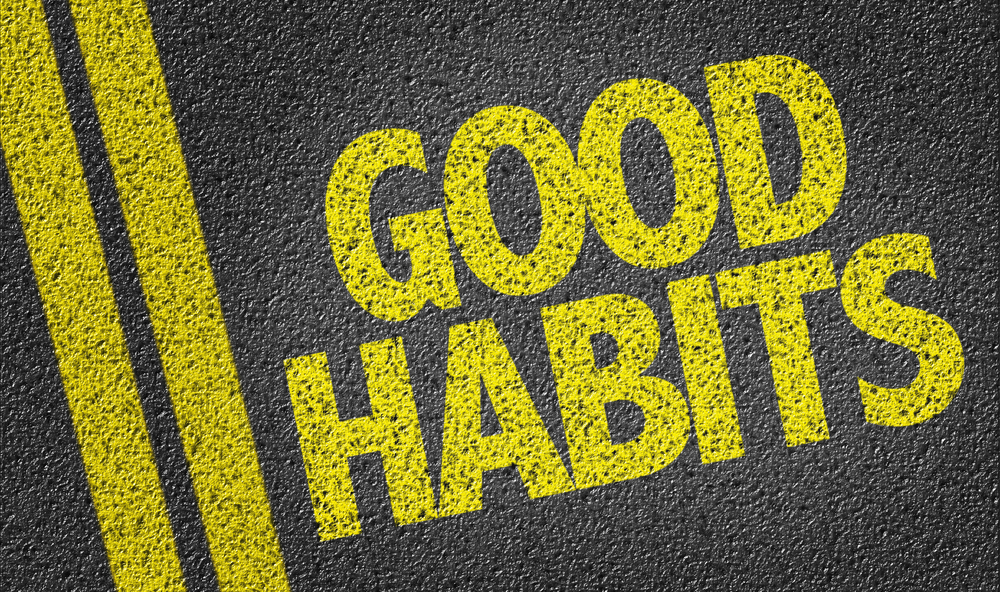
2. Give High-Traffic Areas a “daily reset”
Let’s face it: certain areas in your home, like the kitchen, dining table, and entryway, tend to get messy despite your best tidying efforts. Rather than struggling to maintain constant tidiness, why not consider a “daily reset” for these areas?
Remove anything that don’t belong, put away items in their proper storage place. This simple daily habit not only makes your home tidy but also stops clutter from piling up.
3. Invest in Organization Solutions
If you find your home ‘messy’, but there is really no more stuff you can declutter, investing in organization solutions is a great way to keeping things tidy.
From customizable shelves, enclosed storage systems and even drawer organizers, these solutions come in many different forms and are accessible to suit every budget and style.
In addition, spending the time to find aesthetically pleasing storage items (including baskets and jars) can personalize your home in addition to making it look tidy.
Re-Evaluate Your Goal
If you have tried the above but still feels your home is cluttered, then it’s time to prepare for another round of decluttering.
But first, it’s important to re-evaluate your goal.
Ask yourself the following questions:
What was your goal when you started the last round of decluttering? Were you able to achieve your goal? What are you hoping to accomplish this time? Any specific categories you’d like to focus on this time?
For example, maybe there were many ‘just in case‘ items that you couldn’t get rid of during the previous round. Now that your ‘decluttering muscle’ has grown stronger, this time around you may be able to approach those “just in case” items with more clarity and insight.
Set a new goal for yourself and create a new plan.
Decluttering is a personal journey
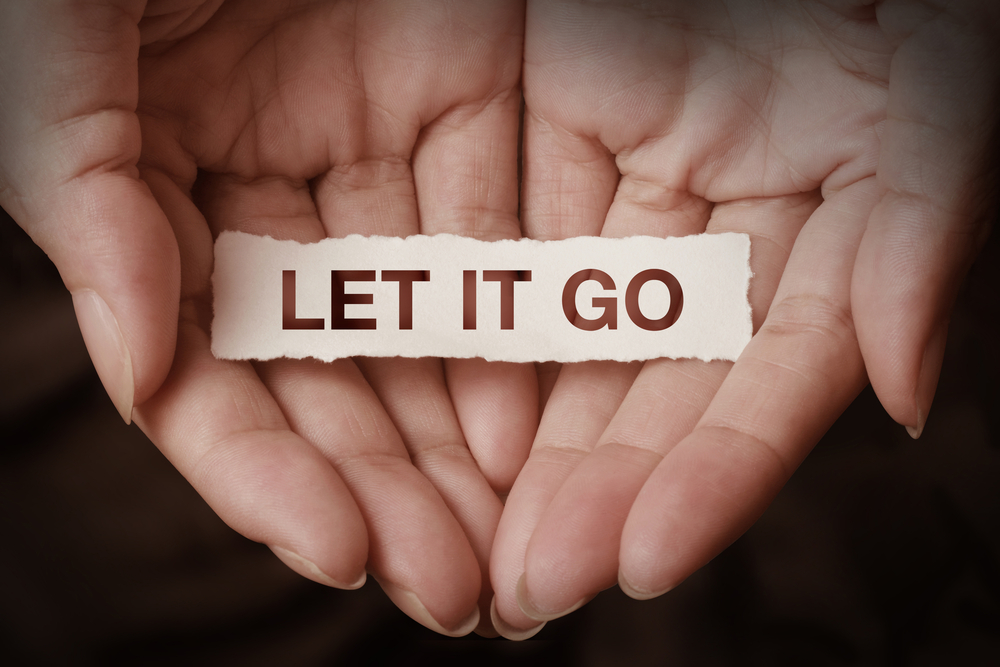
Don’t be discouraged if you still have lots of sentimental items that you are unable to declutter.
Decluttering is a self-reflection journey in its own right.
It can be tough to get rid of things that have been in our homes for a long time and that we have become attached to. Don’t rush the decluttering process or force yourself to make hard decisions before you’re ready .
Take the time to assess yourself and your belongings – really think about why you keep certain things and why you want to let other things go.
When you’re ready, the stuff that you weren’t able to part with will be gone in its own due time
Conclusion:
Understanding about your clutter tolerance, and how it might have changed during the decluttering process will make you feel better about the ‘still cluttered’ feeling.
Re-evaluating goals is essential for success but don’t forget about other elements such as furniture areas and wall decors as well as investing in organization solutions which will make life easier down the line too!
Don’t forget that it’s ok to do more than one round of decluttering. It will become easier and easier as your decluttering muscle grows bigger.
